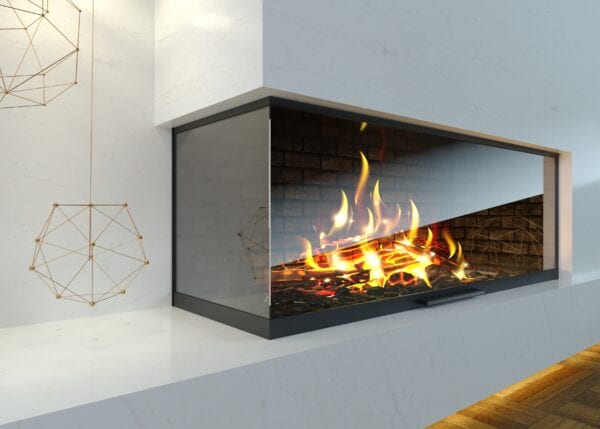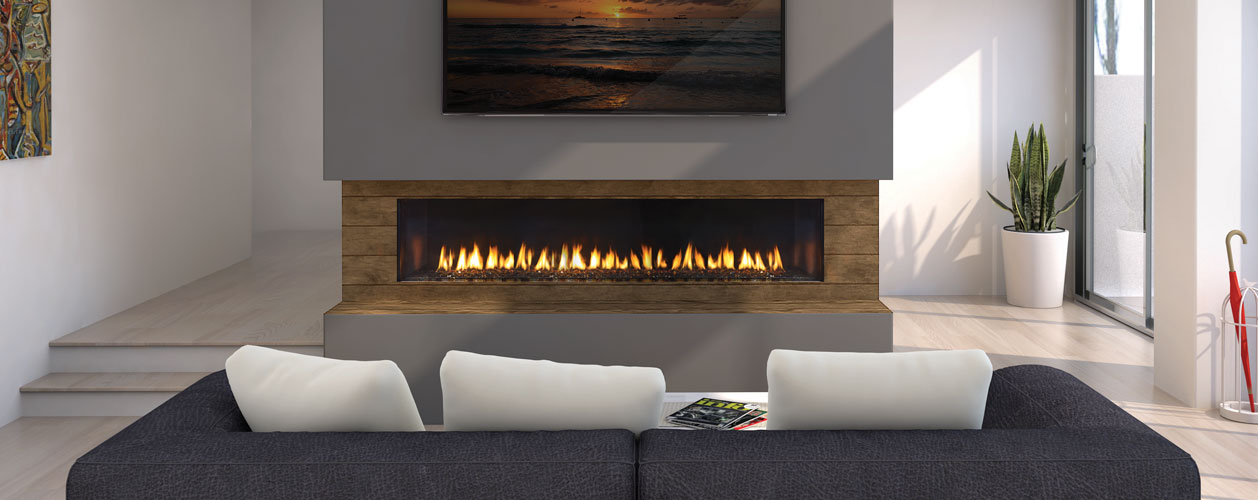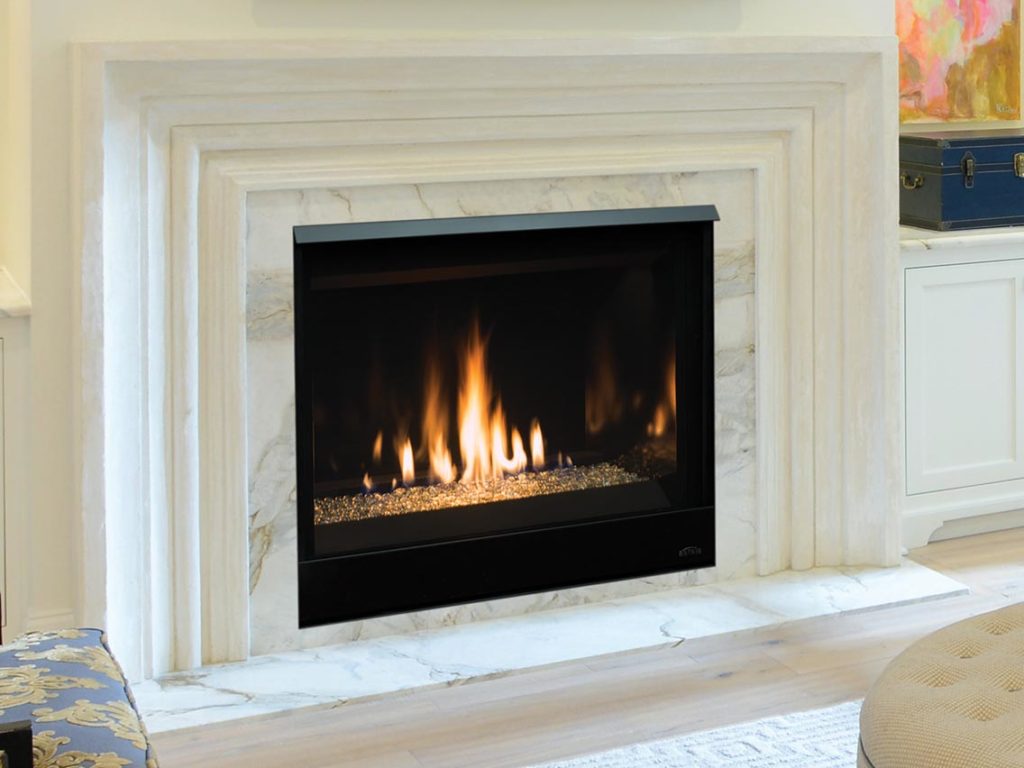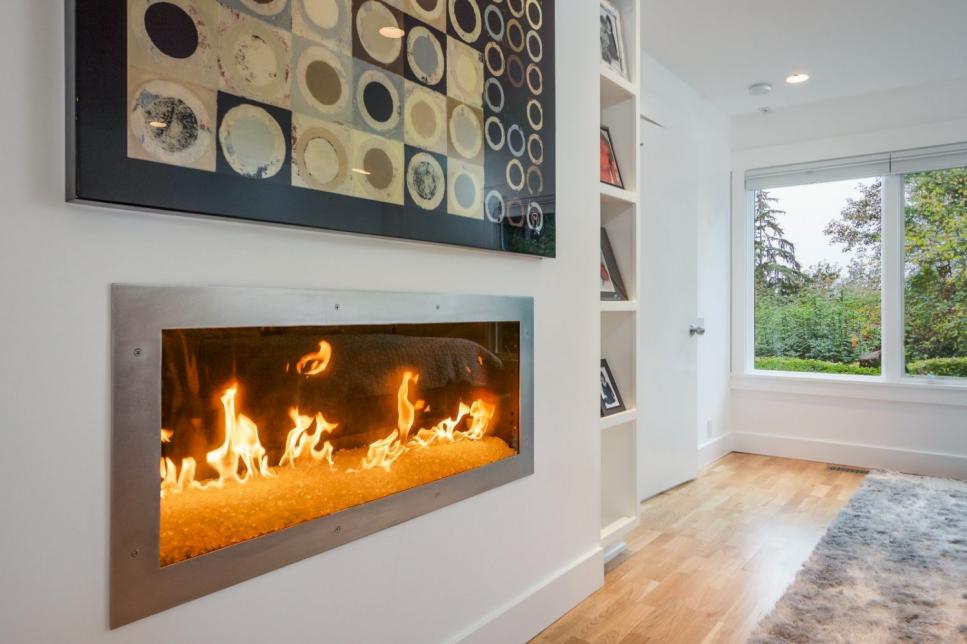As someone who values both the warmth and ambiance that a fireplace adds to a living environment, I’ve frequently studied the numerous options available. Gas fireplaces, in particular, have piqued my interest because of their convenience and the variety of beautiful options they provide. I’m pleased to share some of the unique ways I’ve seen them used in home design.
Modern and Minimalistic Designs
The sleek, minimalist approach is one of my favorite types of indoor gas fireplaces. These designs frequently include clean lines, basic shapes, and an emphasis on the beauty of the flame itself. I’ve seen installations where the fireplace is perfectly merged into a wall, with a sleek, frameless glass front that allows you a clear view of the flames. This results in an elegant, clean appearance that fits contemporary settings.
Another feature of minimalist gas fireplaces that I like is the use of modest, high-quality materials for the surround. Instead of ornamental mantels, these designs frequently incorporate materials such as smooth concrete, stainless steel, or even plain plasterboard painted in a neutral color. The fire is the dominant visual feature, evoking a sense of tranquility and understated elegance. I can see this style working well in a modern living room or perhaps a master bedroom, giving both warmth and elegant simplicity.
For my own taste, I like the idea of a linear gas fireplace situated within a long, horizontal recess in the wall. This creates a striking focal point without dominating the room. The flames dancing across a bed of glass beads or smooth stones can be captivating, and the installation’s clean lines would complement a modern style. I particularly like the convenience of having a remote control, which allows me to regulate the flame height and heat output with the push of a button.
Rustic and Natural Inspirations
On the opposite end of the design spectrum, I find rustic and natural-inspired indoor gas fireplaces equally appealing. These designs frequently use materials such as recycled wood, natural stone, or brick to create a warm and inviting feel. I’ve seen mantels made from broad, aged beams, which add history and character to the fireplace. The use of rough stone or brick for the surround adds to the rustic vibe, giving the fireplace the appearance of being a long-standing fixture in the home.
The firebox in these rustic designs frequently includes realistic-looking logs, sometimes with glowing embers, to replicate the look and feel of a conventional wood-burning fireplace without the clutter and care. I like how these components mix to form a warm and inviting focal point, ideal for a pleasant living room or den. The idea of cuddling up in front of such a fireplace on a cold evening with a nice book is certainly attractive.
If I were to go with a rustic design in my own home, I’d think about combining a stone surround with a salvaged wood mantel. The natural textures and earthy tones would provide a sense of warmth and closeness to nature. I also like the concept of incorporating some artistic items into the mantel, such as antique lamps or natural wood carvings, to heighten the comfortable and inviting atmosphere. The ease of gas combined with the aesthetics of a classic fireplace appears to be an ideal mix.
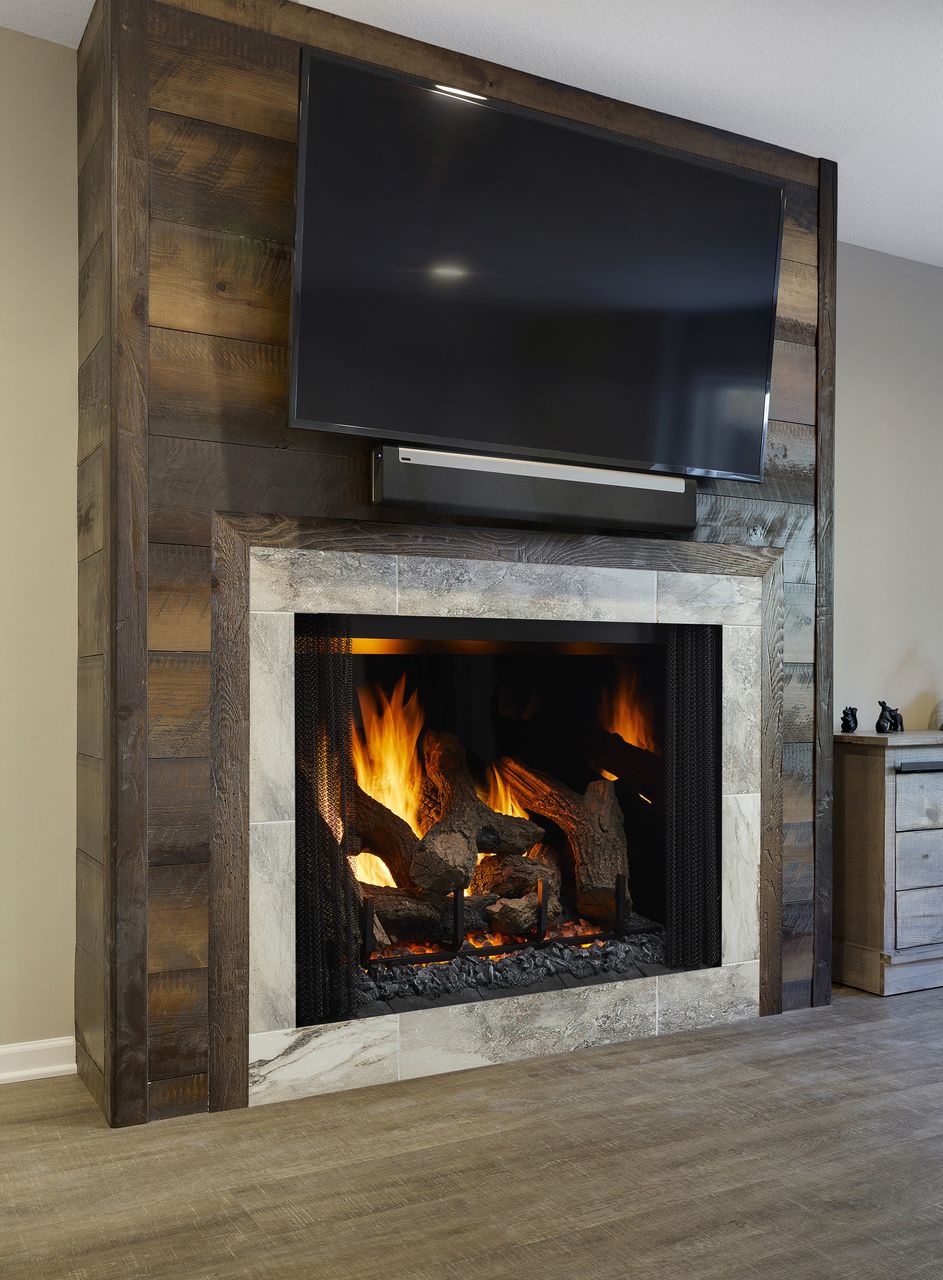
Transitional and Timeless Styles
Transitional-style indoor gas fireplaces are versatile and ageless, appealing to individuals who value a blend of modern and traditional design. These designs frequently combine clean lines with classic features, resulting in an appearance that is both modern and timeless. I’ve seen mantels made with a mix of simple moldings and exquisite accents, creating a sophisticated framing for the fireplace without becoming unduly ornate.
In transitional designs, the surrounds might be made of neutral-colored materials such as marble, limestone, or tile, lending a touch of sophistication without being too stark. Fireboxes typically have a clean, contemporary appearance, with glass doors or a simple mesh screen. The whole impression is one of understated elegance and comfortable sophistication, making these fireplaces an adaptable addition to a wide range of design styles.
In my own home, a transitional gas fireplace may be an excellent approach to bridge the gap between various architectural aspects. I might go for a mantel with classic proportions but in a painted finish rather than dark wood. Combining this with a basic marble surround and a clean-lined firebox would result in a look that is both timeless and fresh. This form has the ability to adapt to changing decor over time, making it both practical and elegant.
Unique and Artistic Expressions
Beyond the more typical types, I’ve discovered several genuinely distinctive and artistic indoor gas fireplace designs that stand out. These installations frequently serve as a focal point not only for warmth but also as a work of art in the room. I’ve seen fireplaces integrated into custom-built media centers, with imaginative tilework or sculptural elements surrounding the firebox.
Another artistic option is to use surprising materials or shapes for the fireplace surround. I’ve seen designs that incorporate curved glass, metalwork with elaborate cuts, and even mosaic tile patterns that convey a story. These one-of-a-kind expressions may make a space stand out while also reflecting the homeowner’s personality and style. The gas fuel offers for greater design flexibility because it eliminates the need for a typical chimney in some installations, opening up new creative options.
Space-Saving and Built-in Solutions
Indoor gas fireplace designs that save space are very useful in smaller houses or apartments. I’ve seen numerous creative methods to include a fireplace without taking up too much floor area. Wall-mounted gas fireplaces are an excellent alternative since they can be hung directly on the wall like a work of art, offering warmth and ambiance without the need for a hearth or a big surround.
Another space-saving option is a built-in gas fireplace that is integrated into the wall. This results in a clean and seamless appearance that may be integrated into a media center or bespoke shelving unit. Corner gas fireplaces are another effective technique to make use of unused space in a room. These designs can fit neatly into a corner, creating a focal point without impeding traffic flow.
If space was a concern in my own home, I would absolutely consider a wall-mounted or built-in gas fireplace. These solutions provide the beauty and comfort of a fireplace while requiring less space than a standard freestanding device. In certain circumstances, the simplicity of gas makes installation easier, and the range of types available means that even a space-saving fireplace may be a fashionable addition to the room.
Outdoor-Indoor Flow Using Gas Fireplaces
One trend that I find particularly intriguing is the usage of indoor gas fireplaces to improve the flow between indoor and outdoor living areas. This is possible with a double-sided gas fireplace that can be seen from both inside and outside the house, such as on a patio or deck. This creates a smooth link between the two rooms and enables for viewing of the fire from all angles.
Another approach to improve the flow is to place an indoor gas fireplace near a wide window or sliding glass door that overlooks an outside living area. The flickering flames inside can provide a warm and attractive backdrop for an outdoor fire pit or heater. This visual connection can broaden the perception of the living space and make both sections feel more integrated.
A double-sided gas fireplace would be an excellent addition to my home, which has a terrace immediately off the living room. Imagine being able to enjoy the warmth and ambiance of a fire while relaxing within or entertaining visitors outside. This sort of design effectively blurs the distinction between interior and outdoor life, resulting in a unified and attractive setting. The availability of gas makes this type of installation more possible in a variety of settings.
Are indoor gas fireplaces energy-efficient?
From what I understand, indoor gas fireplaces can be quite energy-efficient, especially compared to traditional wood-burning fireplaces which can lose a significant amount of heat up the chimney. Modern gas fireplaces often come with features like programmable thermostats and remote controls that allow for precise temperature control, which can help conserve energy. I would look for models with high efficiency ratings to maximize energy savings.
Do indoor gas fireplaces require a chimney?
Not always. One of the advantages of gas fireplaces is that many models can be vented directly through a wall or roof using a smaller pipe, rather than requiring a traditional chimney. Vent-free gas fireplaces are also available in some areas, although local regulations regarding their use can vary. I would definitely check the venting requirements for any model I’m considering to ensure it’s compatible with my home.
What are the different types of fuel used for indoor gas fireplaces?
The most common types of fuel for indoor gas fireplaces are natural gas and propane. Natural gas is typically more cost-effective if a connection is already available in your home. Propane requires a storage tank and can be a good option for homes without natural gas access. I would consider the availability and cost of each fuel type in my area when making a decision.
Can I customize the look of the flames in a gas fireplace?
Yes, many modern gas fireplaces offer options for customizing the look of the flames. Some models have adjustable flame height and intensity, allowing you to create the perfect ambiance. Others feature different burner designs or decorative elements like glass beads or ceramic logs that influence the appearance of the flames. I appreciate this level of customization as it allows me to tailor the fireplace to my personal preferences.
How much maintenance do indoor gas fireplaces typically require?
Compared to wood-burning fireplaces, indoor gas fireplaces generally require much less maintenance. Regular professional servicing is recommended to ensure safe and efficient operation, typically involving checking the burner, pilot light, and venting system. I would also keep the glass front clean to maintain a clear view of the flames. Overall, the maintenance is relatively minimal.
Are there safety features to consider with indoor gas fireplaces?
Yes, safety is a crucial consideration with any gas appliance. Modern gas fireplaces come with various safety features, such as oxygen depletion sensors that shut off the gas if carbon monoxide levels become too high, and safety screens to prevent accidental contact with the hot glass. I would ensure that any fireplace I choose has these important safety features and is installed by a qualified professional.
Best Gas Fireplace Designs – Modern Hearth Ideas
Modern Gas Fireplaces
Indoor Gas Fireplace Dream House Gas Fireplaces
Related Posts:
